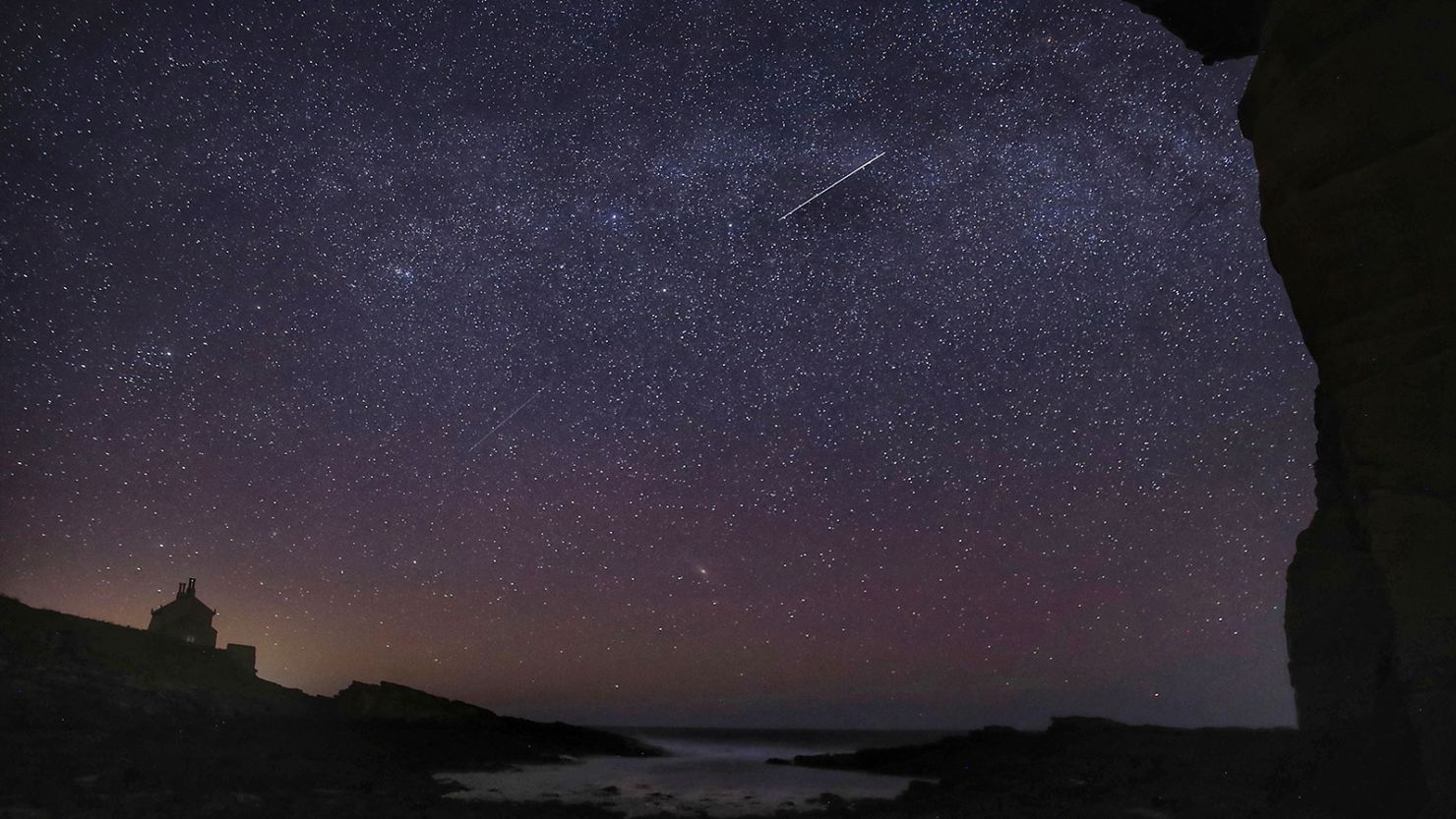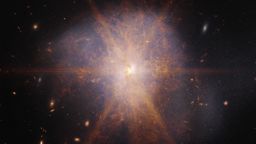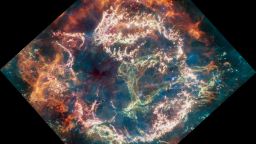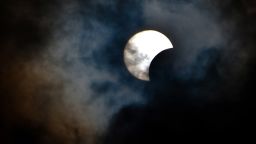Sign up for CNN’s Wonder Theory science newsletter. Explore the universe with news on fascinating discoveries, scientific advancements and more.
After no major annual meteor showers for months, the Lyrids are here to end the drought.
Known as one of the oldest-recorded meteor showers, the Lyrids are expected to produce 10 to 15 meteors per hour for three nights centered around its peak of 9:06 p.m. ET on Saturday, according to EarthSky.
The Lyrids have been making their appearance in the sky since April 15 and will hang around until April 29, but their peak is relatively narrow compared with the famous summer Perseids and other showers.
The best time to view the Lyrids — with a chance at seeing the most meteors — will start late evening on Saturday through the early morning hours on Sunday.
The good news is that a near new moon will leave perfect viewing conditions, with no bright light interference from what a full moon would cause.
“The moon will obscure all but the brightest meteors, so when there’s no lunar interference, you can see bright, faint, all meteors that show up,” said Robert Lunsford, the fireball report coordinator for the American Meteor Society. “The chance for surprises (with this upcoming shower) are pretty small, but since we have no moon in the sky and it occurs on a weekend, we encourage everybody to give it a shot, check it out.”
In an area away from light pollution, observers can expect to catch one meteor every five minutes, Lunsford said. If you are near a city or bright lights, expect one every 15 minutes or so.
Occasionally, the Lyrids have exceeded expectations, with outbursts of up to 100 per hour averaging every 60 years. The next outburst is expected for 2042, according to the society. While no outbursts are predicted for this year, the Lyrids could still be worth your time, with a portion of them fireballs, extra bright meteors in the sky, Lunsford said.
Lyrids’ history dates back centuries
The Lyrids were first recorded in 687 BC, according to NASA, making this meteor shower to be one of the oldest recorded.
“When people first noticed this, like 2,700 years ago, they only noticed it because they saw something falling in the sky. But at that time, they didn’t understand what the meteors actually were — it took much longer,” said Peter Vereš, an astronomer at the Harvard-Smithsonian Center for Astrophysics. “Only in the 19th century was when we kind of understood that they actually came from space.”
Every meteor shower has a parent comet from which comes the debris that makes up the shower. The Lyrids’ comet is named C/1861 G1 Thatcher, and it is a little over halfway through its 415-year orbit. The comet is far away from Earth, but we encounter its debris trail every year.
Due to planetary perturbations, disturbances in a planet’s orbit, denser clumps of debris occur every 60 years caused by this comet’s proximity to Jupiter and Saturn, Lunsford said. This outburst is what was first recorded over 2,700 years ago.
How to see a meteor
The Lyrids may not be the most active of the annual showers. But compared with the hundreds of other meteor showers scientists discovered using professional equipment, Vereš noted, this shower can offer a few meteors per hour bright enough for a casual observer to see.
If you are looking to see one of these meteors, it is best to go outside at a time where its radiant Lyra, the constellation in which the meteors appear to originate from, will be above the horizon. For most, that will be during the last few hours before dawn. Those in the southern most parts of the world, New Zealand and Australia, could still see meteors but at reduced rates since Lyra does not rise as high above the horizon as in the Northern Hemisphere, Lunsford said.
“Indulge in seeing the universe,” Vereš said. “It’s becoming more and more rare that we have time to actually go out and see events like this — one reason is the light pollution that is cutting out of our ability to go out and actually see anything in the sky.
“It’s important to sometimes go out and not stare at our computers and screens all the time and spend some time outdoors in nature to enjoy the dark skies that (are) around us.”
More meteor showers to come
If you miss the narrow peak of the Lyrids, there are plenty more opportunities to spot a meteor.
Here are the remaining meteor showers of 2023 and their peak dates:
• Eta Aquariids: May 5-6
• Southern Delta Aquariids: July 30-31
• Alpha Capricornids: July 30-31
• Perseids: August 12-13
• Orionids: October 20-21
• Southern Taurids: November 4-5
• Northern Taurids: November 11-12
• Leonids: November 17-18
• Geminids: December 13-14
• Ursids: December 21-22
Solar and lunar eclipses
The most recent eclipse was a rare annular-total eclipse that occurred on Wednesday but was only visible to parts of Australia, East Timor and Indonesia in its narrow path across the Indian Ocean. While this one was hard to view, you have other chances this year to see one in your area:
If you live in North, Central or South America, an annular solar eclipse will take place on October 14, when the moon moves in front of the Earth’s view of the sun, creating a crisp, fiery circle in the sky.
For those in Africa, Asia and Australia, a penumbral lunar eclipse will occur on May 5, and on October 28, a partial lunar eclipse will be viewable in Europe, Asia, Australia, Africa, parts of North America and much of South America. Lunar eclipses occur when the moon enters Earth’s shadow and causes the lunar surface to dim.
More full moons
The next full moon will bring in the first week of May, a time for flowers — hence its name, the flower moon. Here’s the list of full moons remaining in 2023, according to the Farmers’ Almanac:
• May 5: Flower moon
• June 3: Strawberry moon
• July 3: Buck moon
• August 1: Sturgeon moon
• August 30: Blue moon
• September 29: Harvest moon
• October 28: Hunter’s moon
• November 27: Beaver moon
• December 26: Cold moon





